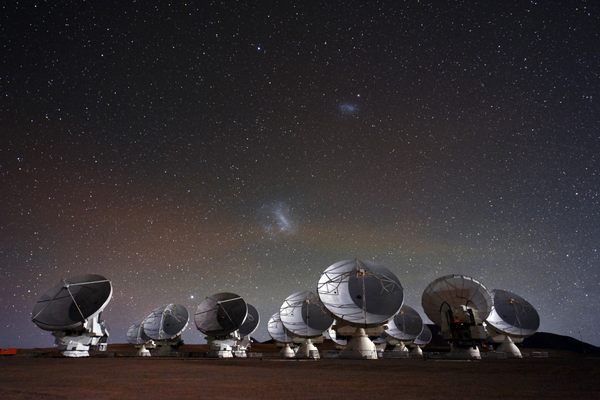AO Edited
Parkes Radio Telescope
This giant dish located in a sheep paddock was the primary receiver of Apollo 11 TV transmissions.
When Apollo 11 landed on the moon in 1969, over 600 million people tuned in to watch the broadcast.
The television signals were sent from an antenna on top of the Lunar Module and were received on Earth by three different tracking antennas simultaneously. Those receivers were the Goldstone dish in California’s Mojave desert, the Honeysuckle Creek antenna near Canberra, and finally, the radio telescope near Parkes, Australia.
After about nine minutes of switching between the fuzzy receptions of both Goldstone and Honeysuckle Creek, NASA finally decided to go with the superior signal from Parkes. While it might seem like a rather mundane sequence of events now, the role that Parkes came to fill in the American mission to the moon proved to be crucial. Undoubtedly, the primary objective of the Apollo astronauts, once they had landed on the lunar surface, was to return to Earth safely. But for the public, those few hours of images documenting man’s first romp on another world were invaluable, and an important part of the mission’s success.
In fact, the story of Parkes and how a little-known telescope in the middle of a sheep paddock came to be the primary receiver of the Apollo feed was even developed into a feature length film entitled, The Dish. And while most people will recognize the dish from its role in the 2000 movie, or from its involvement with Apollo, the Parkes Radio Telescope actually has a long history of accomplishment in the field of astronomy.
The 64-meter dish was built in 1961 near the rural town of Parkes, about halfway between Melbourne and Brisbane. It has operated almost continuously since its completion, and aside from the Apollo transmissions, Parkes has been on the receiving end of several notable space missions. Among the images picked up by the giant dish are those of Voyager 2, which provided the first fly-by shots of Uranus and Neptune, as well as those of the Giotto probe which snapped close-up photographs of Halley’s Comet.
In recent years, however, the Parkes Observatory has been most famous for its research on pulsars, rapidly rotating neutron stars that emit highly energetic radiation. The first pulsar was discovered by a team of Cambridge University scientists in 1967, and because of its highly regular emission of pulsed signals, it was thought to be artificial in origin. After ruling out any Earthly technologies as the culprit of the signal, the team named the object LGM-1, a moniker that stood for “Little Green Men.”
There was even speculation that the unnaturally periodic emissions could be a sort of navigational beacon devised by some far-off intelligent civilization. But it wasn’t long before the right explanation was found. Only a year later it was suggested that the object was a rotating neutron star, the remnant of a star’s core after undergoing a supernova. The name “neutron” star comes from the fact that after collapsing under its own weight, the star’s internal pressure is so large that protons and electrons are pushed together, combining and leaving only neutrons.
The result is an extremely dense star, with more mass than our Sun, but packed into a body approximately 20 kilometers across. And as the star spins, it twists its magnetic field lines into directionalized jets which carry charged particles away from the north and south magnetic poles. However, just like on Earth, the rotational axis is not aligned with the magnetic poles, so the beams of radiation sweep through space in a manner similar to a lighthouse beacon. The rate of this sweeping motion can often be very quick, leading to pulses of radio waves that may repeat anywhere between one millisecond and several seconds.
Since their 1967 discovery, over one thousand pulsars have been detected, many of them by astronomers at Parkes Radio Telescope. Visitors to the observatory can learn more about the research done at Parkes in the Visitor’s Center, which sits literally in the shadow of the dish, or in the site’s two theaters, which show movies about radio astronomy and the solar system.
Know Before You Go
The Parkes Radio Telescope is 20 km north of Parkes on the Newell Highway, the main highway between Brisbane and Melbourne. The road to the telescope is clearly marked.
Community Contributors
Added by
Edited by
Plan Your Trip
The Atlas Obscura Podcast is Back!
























Follow us on Twitter to get the latest on the world's hidden wonders.
Like us on Facebook to get the latest on the world's hidden wonders.
Follow us on Twitter Like us on Facebook